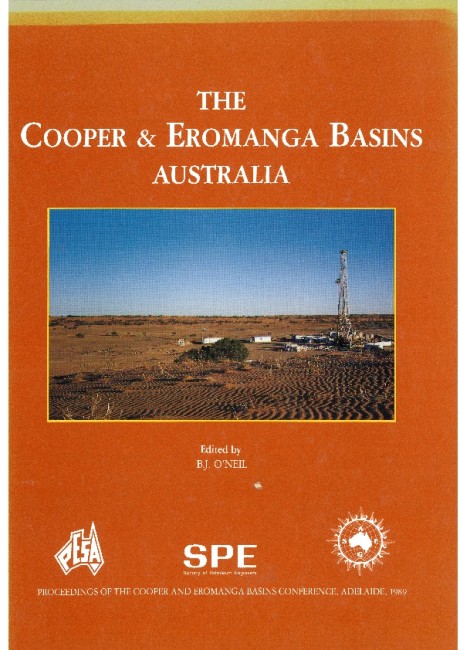Publication Name: The Cooper & Eromanga Basins Australia
Authors: M. J. Wiltshire
Date Published: June 1989
Number of Pages: 27
Reference Type: Book Section
Abstract:
Detailed time-stratigraphic and palaeogeographic analysis of contemporaneous Permo-Triassic, Mid to LateTriassic, Jurassic and Cretaceous sequences in the Eromanga, Surat, Carpentaria, Laura, Clarence-Moreton,
and Sydney Basins is currently being undertaken. Basic data for the study comprise detailed digital logs and the
uniformly scaled plots generated therefrom. The use of standardized composite data displays provides a powerful tool for detailed analyses of depositional sequences. Large volumes of standardized data can be reviewed rapidly and lateral variations, often quite subtle, can be readily detected: the resultant regional interpretations are regarded with confidence.
Preliminary interpretive results indicate major divergences from current mainstream thinking regarding depositional history and palaeogeography of Mid to Late Triassic and Jurassic units in the Eromanga Basin. A
dominantly dosed Eromanga Basin is proposed (that is without an eastward drainage connection to the Surat
Basin) during later Triassic and Jurassic time. Evidence is presented to suggest that a major source of sand supply to both the Eromanga and Surat Basins lay to the northeast of the Eromanga Basin, and that this source was active from Mid-Triassic to at least Mid-Jurassic time.
Recurrences of extensive shallow lacustrine sediments throughout Jurassic time in the Eromanga and Surat Basins suggest that the entire area was of low relief. The absence of significant volumes of overbank sediments of time equivalence to the major sand units of the western Eromanga Basin, the uniformity of grain size, the near flat relief and the huge volume of sand that was transported across the Basin during the Early to Mid:Jurassic lead to the conclusion that wind was the probable primary transport mechanism for most of the sand.
Conventional interpretations of fluvial-lacustrine and lacustrine-deltaic settings for many of the known fields may need to be revised, in the light of new regional evidence. Previously, detailed stratigraphic studies directed to fieldscale problems have led to regionally implausible conclusions. A regional data net of sufficient detail now
exists to allow workers to place their detailed studies in a regional context. Use of such tools can be expected to
result in better local and regional interpretations, with significant consequences for the exploration for, and the
development of, Eromanga Basin prospects.


